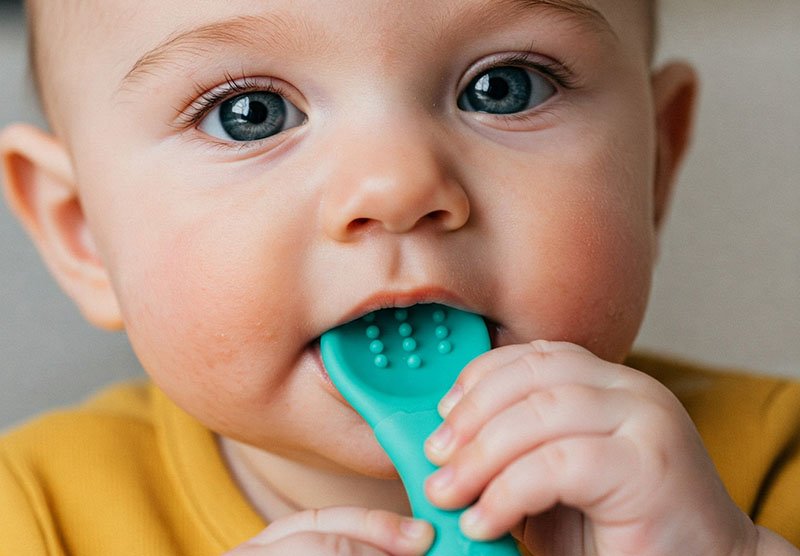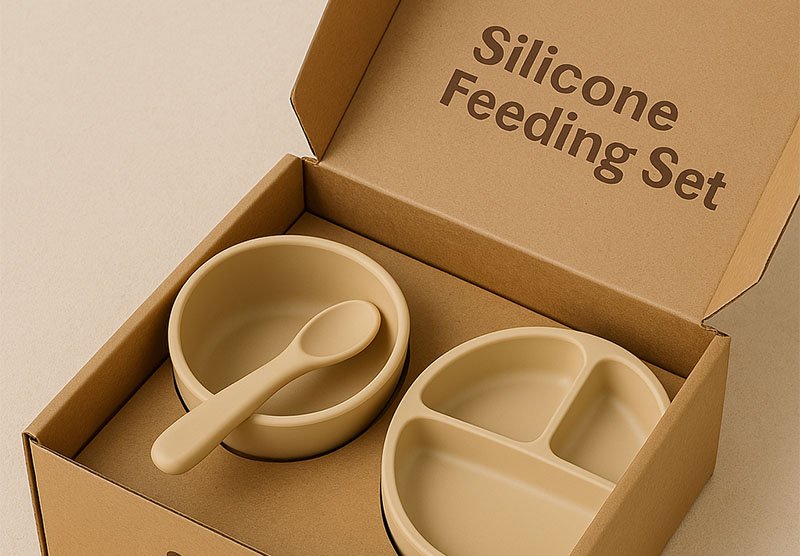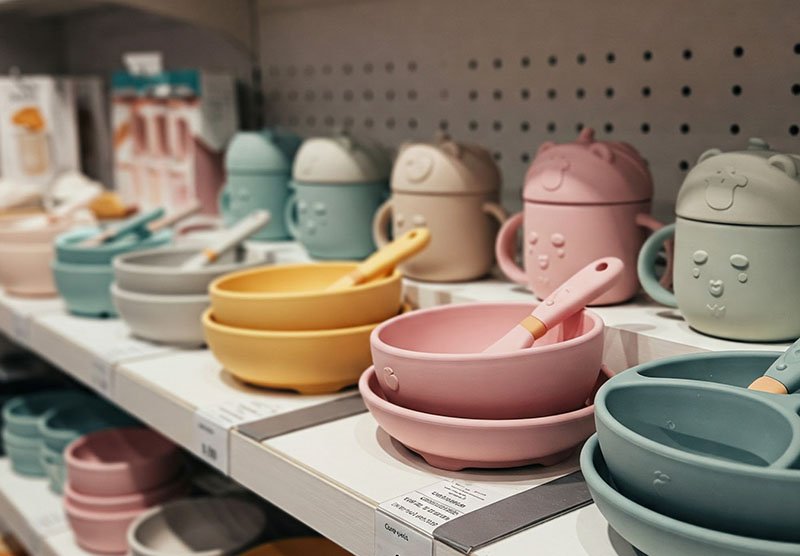Parents want the best for their babies—but when it comes to feeding sets, choosing between silicone and plastic can feel like navigating a minefield. Conflicting advice, overwhelming options, and safety concerns only make it worse. And with so many suppliers pushing both, how do we know what’s actually better?
In short: Silicone feeding sets are the safer, more durable, and eco-friendly choice compared to plastic. They resist heat, won’t leach chemicals, and last longer—all while being soft and gentle for babies. You’ll pay a little more upfront, but the value and peace of mind? Worth it.
Still deciding? Let’s break down every angle and compare them side by side—like only someone who’s been in the silicone business since 2012 can.
What’s the Real Difference Between Silicone and Plastic Feeding Sets?
Let’s keep it simple.
Plastic is cheap, lightweight, and everywhere. It’s been the go-to material for decades. But it’s not all sunshine and BPA-free labels. Over time, even “safe plastics” can degrade, especially when heated.
Silicone, on the other hand, is a flexible, rubber-like material made from silica (basically sand). Food-grade silicone is heat-resistant, non-toxic, and incredibly durable.
📎 More on how silicone is made
📎 Comparison of plastic types in baby products

Safety First: Which Material Puts Your Baby at Risk?
This is where plastic starts to lose ground. Even BPA-free plastic can still contain BPS, phthalates, or other synthetic additives. Some of these chemicals are linked to hormone disruption—scary stuff when you’re feeding a 6-month-old.
Silicone? It doesn’t leach. It doesn’t degrade easily. It doesn’t melt or warp when exposed to hot food or a dishwasher’s high heat.
We make all our silicone baby products from FDA-approved, LFGB-tested food-grade silicone. I wouldn’t use anything less for my own kids.
📎 FDA guidelines on silicone in food contact
Durability Check: Which One Stands the Test of Time?
Plastic feeding sets scratch. They stain. They warp. They mysteriously get sticky over time. Sound familiar?
Silicone is practically invincible in the baby world. It’s microwave-safe, dishwasher-safe, even freezer-safe. You can twist it, drop it, bite it—and it still looks new. Parents aren’t just buying one set—they’re buying fewer over time.
Our clients in the U.S. especially love this angle. Less waste, less replacement, better margins.

Cost vs. Value: Is Silicone Worth the Price?
Let’s not sugarcoat it: silicone sets cost more upfront. A lot of your B2B buyers will flinch at that.
But here’s the kicker—they sell for more and they last longer. That’s the kind of math that works in your favor.
In the U.S., rebranded silicone feeding sets go for 2–4x the landed cost. The perceived value is high. Parents are willing to pay for safety and design. It’s not just a bowl; it’s peace of mind.
Eco-Friendliness: What Happens After the Baby Grows Up?
Plastic doesn’t go away. It ends up in landfills, oceans, and—eventually—our food chain. And don’t get me started on the microplastic problem.
Silicone, while not biodegradable, is recyclable (in specialized facilities). It doesn’t break down into microplastics and has a much longer usable life, which means less waste overall.
If you’re pitching eco-conscious brands or retailers, silicone is a strong angle.
📎 Environmental impact of silicone vs. plastic

Design and Customization: Who Wins?
Here’s where we shine, Frank. Silicone is incredibly versatile.
We can do any color, shape, logo embossing, suction bases, built-in compartments—you name it. Custom molds? No problem. That’s why so many boutique baby brands love working with us.
Plastic is rigid. It’s limited in design. It cracks under pressure—literally and creatively.
Our in-house team uses express mold machines and 3D printing to take a sketch and turn it into reality in a week. That’s a USP no one else is offering at this level.
📎 Our silicone customization process
Cleaning & Maintenance: What Do Parents Prefer?
Ask any parent: convenience is king.
Plastic can absorb odors and colors (carrot puree, anyone?). Silicone doesn’t. It cleans like a dream. No crevices. No weird film. Pop it in the dishwasher or boil it to sanitize—done.
It’s also naturally antimicrobial. That’s a big win with baby products where hygiene is everything.
What Are the Downsides of Silicone?
Okay, let’s be real. Nothing’s perfect.
- Silicone isn’t biodegradable (yet).
- It can attract dust if not stored properly.
- The upfront cost is higher.
But for a product that sits in a baby’s mouth, touches hot food, and gets washed daily, the pros heavily outweigh the cons.
What Do Retailers and Distributors Prefer?
From what I’ve seen, retailers lean toward silicone for its storytelling value—safety, sustainability, and premium design. It’s easier to build a brand around silicone than plastic.
Distributors? They like the margin. The durability means fewer returns and better reviews.
I’ve helped dozens of clients switch from plastic to silicone. They never look back. They sell faster, charge more, and sleep better.

How to Source the Best Silicone Baby Feeding Sets?
Now you’re speaking my language.
When sourcing silicone baby products:
- Look for LFGB or FDA certification
- Ask about custom mold capability
- Confirm the production capacity (we do 100,000 pcs daily)
- Check post-processing options (debossing, printing, packaging)
- Make sure the supplier isn’t just trading—they should own their factory
At Ruiyang Silicone, we do all of the above. We’re not here to just sell—we’re here to partner.
📎 Why work with Ruiyang Silicone?
Conclusion
Plastic had its moment. But today, silicone is the smarter, safer, and more sustainable choice for baby feeding sets. Whether you’re a distributor, brand owner, or importer—if you want peace of mind and long-term value, it’s time to go silicone.